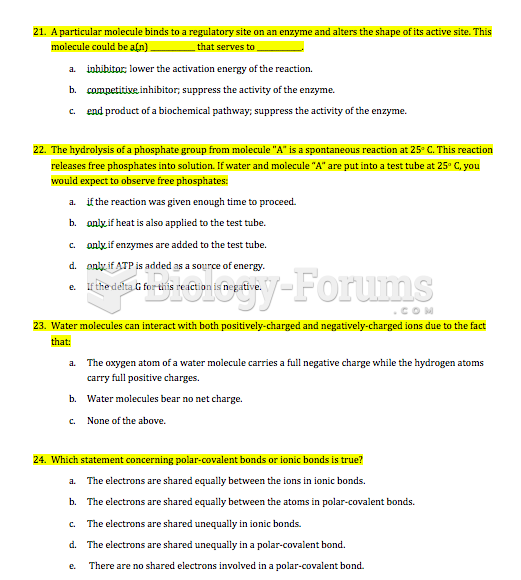|
|
|
Hypertension is a silent killer because it is deadly and has no significant early symptoms. The danger from hypertension is the extra load on the heart, which can lead to hypertensive heart disease and kidney damage. This occurs without any major symptoms until the high blood pressure becomes extreme. Regular blood pressure checks are an important method of catching hypertension before it can kill you.
Cyanide works by making the human body unable to use oxygen.
This year, an estimated 1.4 million Americans will have a new or recurrent heart attack.
During pregnancy, a woman is more likely to experience bleeding gums and nosebleeds caused by hormonal changes that increase blood flow to the mouth and nose.
More than 30% of American adults, and about 12% of children utilize health care approaches that were developed outside of conventional medicine.







